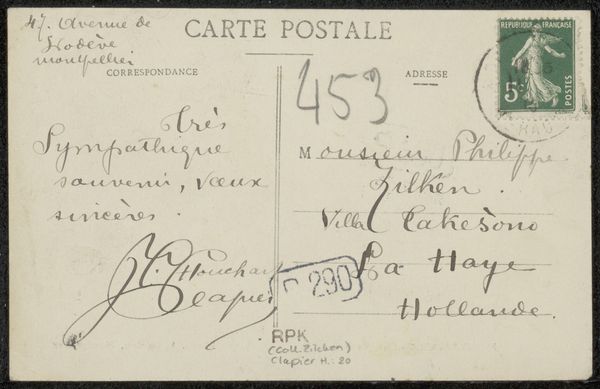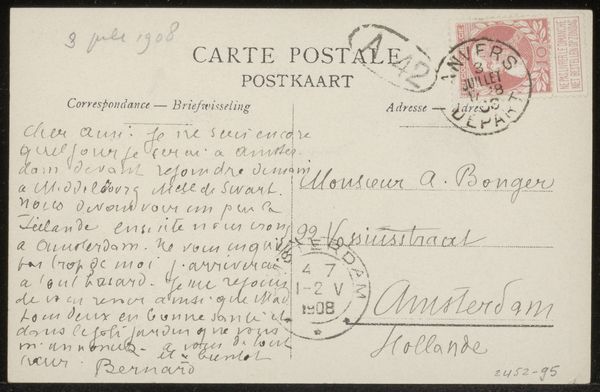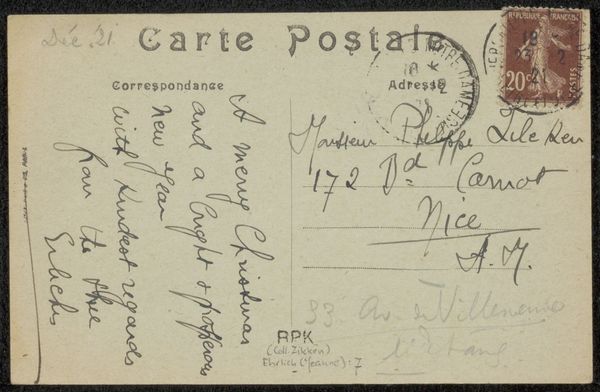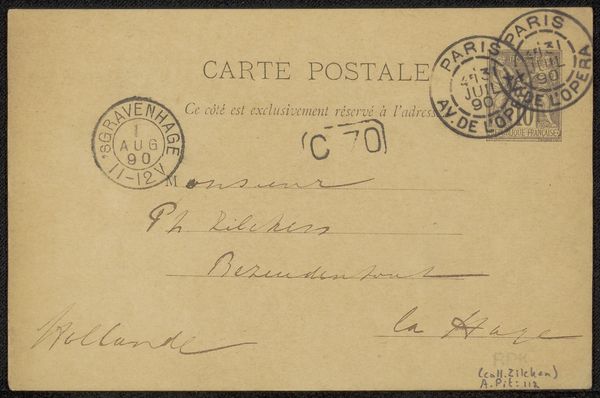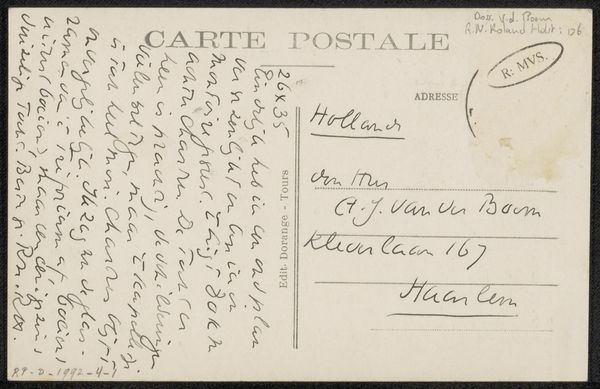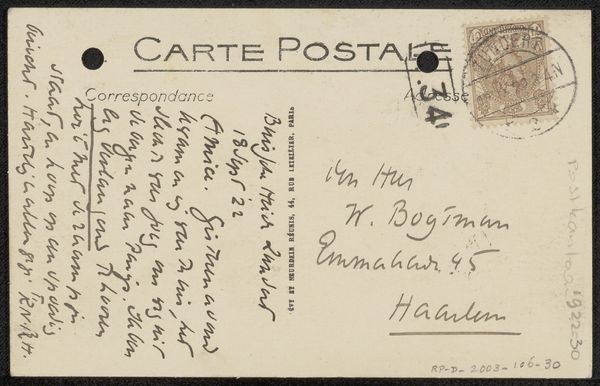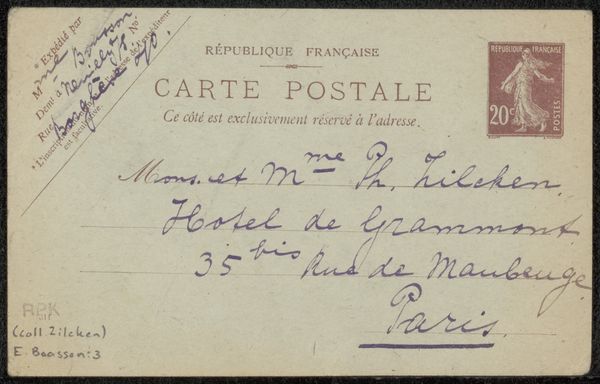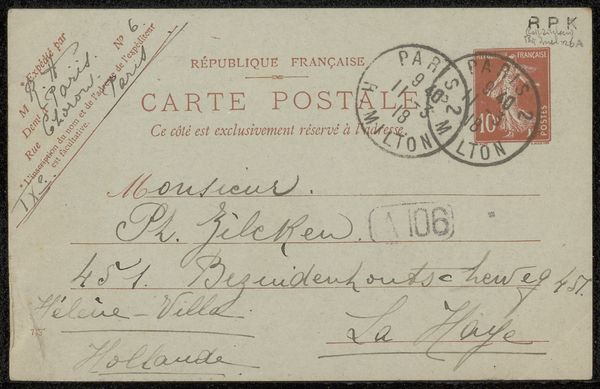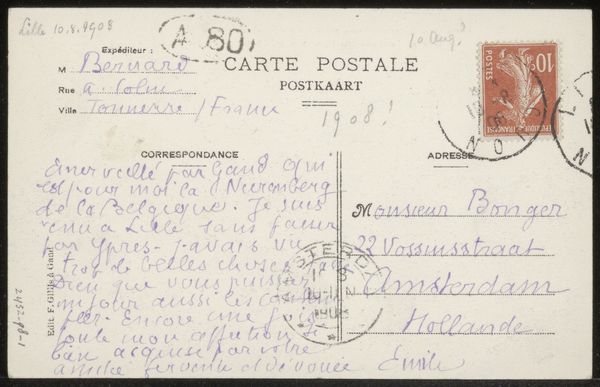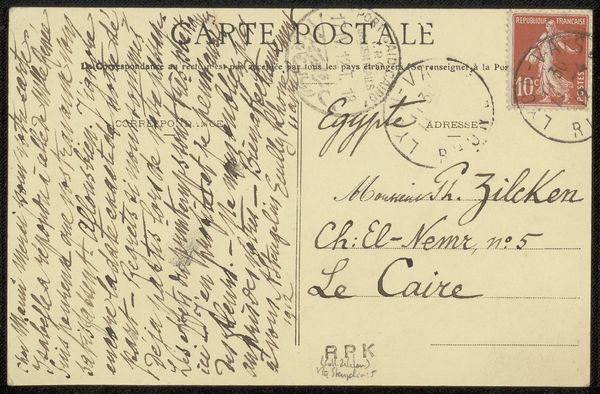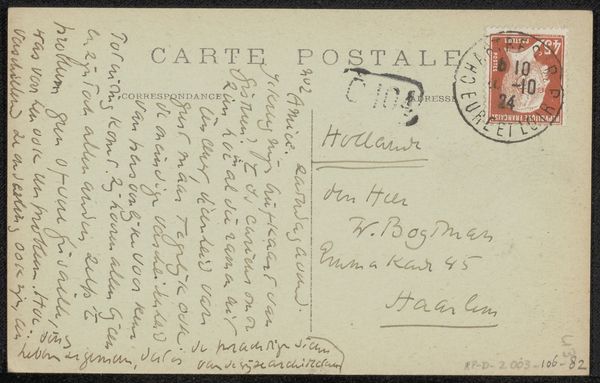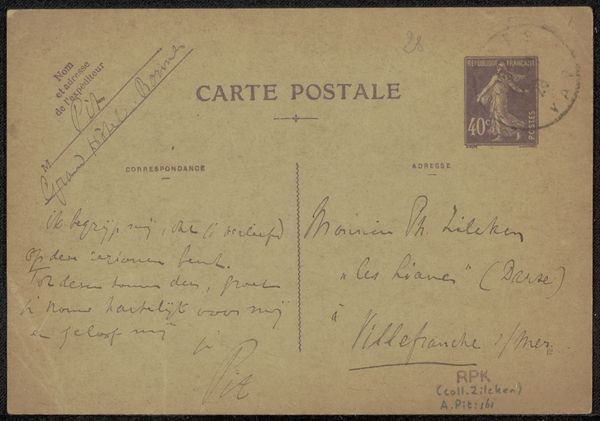
Prentbriefkaart aan Willem Bogtman Possibly 1922 - 1929
0:00
0:00
drawing, paper, ink
#
drawing
#
paper
#
ink
Copyright: Rijks Museum: Open Domain
Editor: So, here we have "Prentbriefkaart aan Willem Bogtman" a postcard by Richard Roland Holst, possibly from the 1920s, made with ink on paper. It’s… surprisingly intimate, seeing handwriting and a postal stamp on display in a museum. What stands out to you as you look at this? Curator: It's the artifactual nature of it that grabs my attention. We see not just an artwork, but a document. It highlights the social role of art at the time – how artists communicated, networked, and maintained relationships through these personalized dispatches. This card provides a tiny glimpse into the art world of the Netherlands in the 1920s, beyond just paintings on a wall. It demonstrates the material culture supporting art production and reception. Do you notice anything specific about where it was sent, and what the message says? Editor: The card is addressed to someone in Haarlem, but the artist is writing from Annecy, France. The writing looks casual, personal... mentions meeting and a museum. Does this change your perspective on Holst? Curator: It enriches it. Roland Holst was a politically engaged artist, often dealing with weighty social themes in his larger works. Here, we see the artist in transit, part of the cosmopolitan art scene, casually mentioning a museum visit, even though they were also contributing significantly to the contemporary social discourse in the art world. It asks us to rethink the ‘artist’ as some removed, solitary genius, and see them as part of a complex and interconnected network of people and places. Does the existence of correspondence such as this change your conception about art being created or experienced by its audiences at the time it was sent? Editor: Definitely. It makes it less precious, somehow more integrated with daily life. It seems like visual arts had been an integral part of the common public life. It reminds me that art history isn't just about studying objects in isolation. Curator: Exactly! It’s about understanding how those objects functioned within their specific historical moment, influencing and influenced by social practices and systems of exchange.
Comments
No comments
Be the first to comment and join the conversation on the ultimate creative platform.
